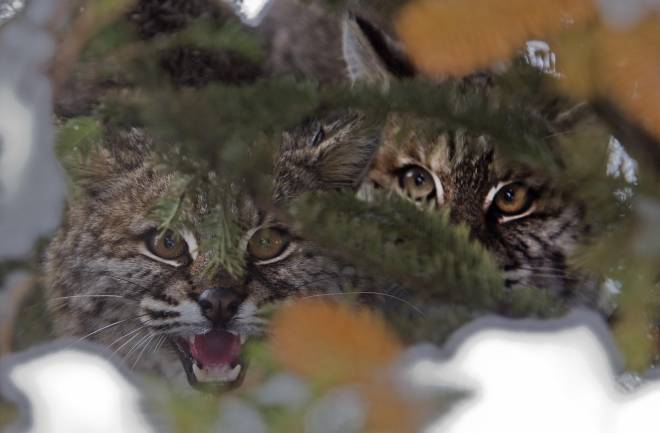
Andrew Hebda, the Nova Scotia Museum's curator of zoology, said the recent heavy snowfall is leaving predators hungry.
"It's been especially difficult for foxes, bobcats and coyotes," Hebda said Tuesday. "Anything that relies on rodents, rabbits or any small mammal for food is stressed."
According to Hebda, small mammals are hibernating longer this year, leaving carnivores at risk of starvation.
"We've had quite a few reports of saw-whet owls being found dead," he said. "If you make your living catching things that move, then there's a problem. They just don't have access to food."
Hope Swinimer, director of the Hope for Wildlife Society, has been rehabilitating wild animals for 20 years. So far this winter she's treated eight bobcats, two minks and countless other owls and rodents for starvation.
"I've been doing this a long time, and I've never seen anything quite like this," said Swinimer. "These animals were so close to death. Bobcats are even wandering into people's backyards, just desperate for food."
It hasn't been easy for the migrating bird population either.
"Woodcocks and robins are arriving in large numbers now," said Hebda. "And they require access to the ground for food. This snow we've been getting in the last 24 hours is a challenge for those birds looking for that first nibble."
"Just this morning, I left my desk for an hour," said Swinimer. "When I got back, I had over 30 calls about dead or dying robins."
Much like the birds, deer are also wandering farther from the forest to find food.
"Their birthing season is soon, so the does need to be in the best shape possible," said Hebda. "That's why they're moving in, scavenging on the sides of the highways where the snow melts."
Even though this spring is off to a late start, he expects the ecosystem to bounce back.
"There's not much ground frost under those masses of snow. So once the snowpack goes, I think we'll find that heat is driven into the ground much faster. Once that's gone, I think we'll see a fairly rapid onset of growth."



Reader Comments
to our Newsletter